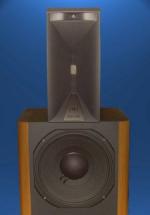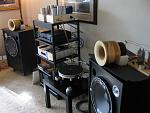
Originally Posted by
Rudy Kleimann
Check out the vertical dispersion pattern graphs on a 2380 horn and a 2352 horn at the JBLPRO site for a working example. Notice that below about 2-3KHz the 40-degree vertical pattern control just goes to hell on the 2380, where the 2352's advertised 50-degree vertical dispersion pattern control holds up well down to about 1KHz. That's the difference between a vertical horn flare dimension maintained to only 9.25" on the 2380 and 16" on the 2352.
Note also that the 2380A brochure states, "...the horn's small vertical mouth dimension (just slightly larger than the compression driver...) allows very compact systems..., that it "provides vertical pattern control to 2KHZ... Should vertical pattern control be required below 2KHZ, 2 or more horns may be stacked to restore full bi-radial performance."
Originally Posted by Zilch






 Reply With Quote
Reply With Quote






 ]
]


